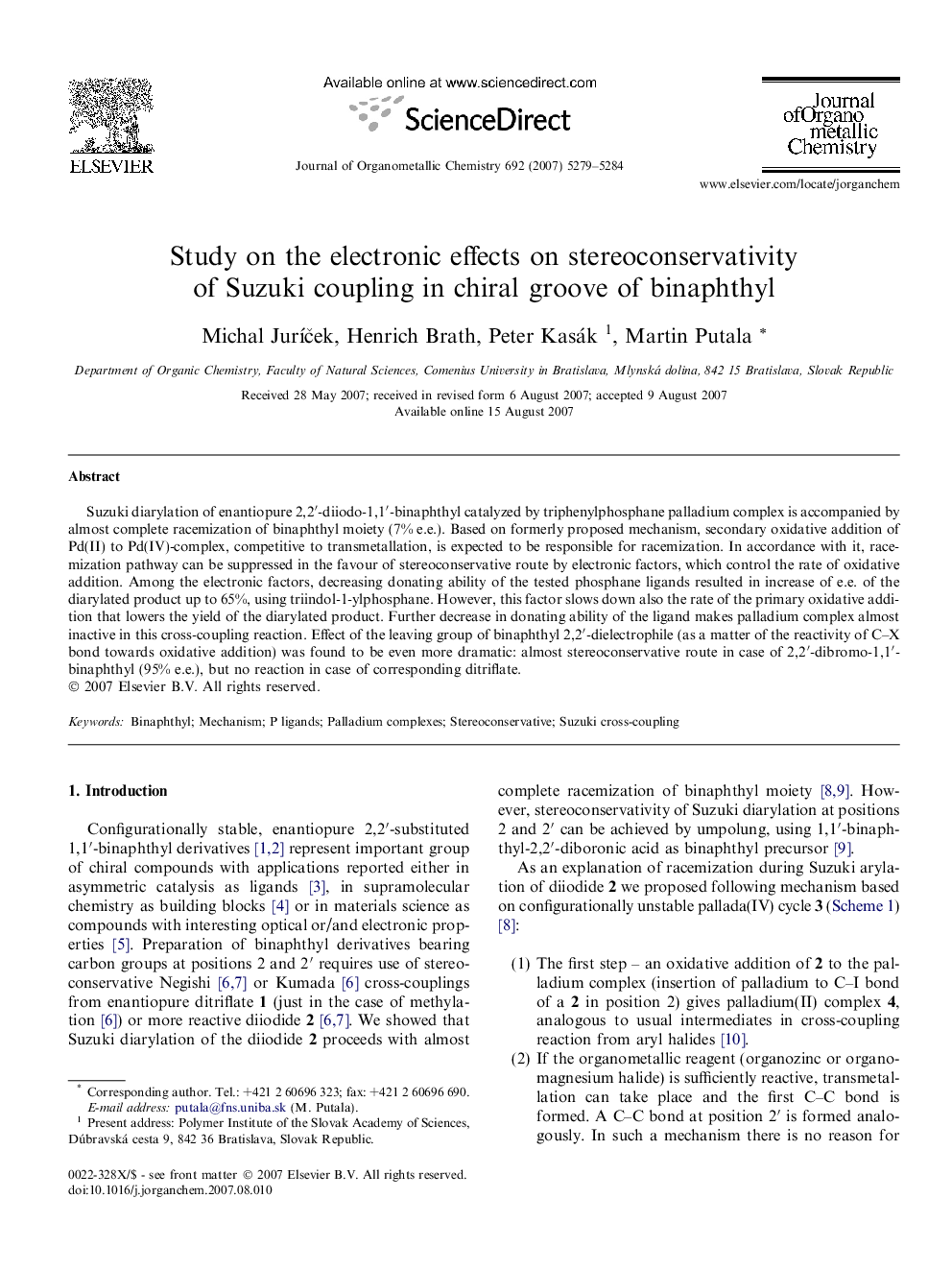| Article ID | Journal | Published Year | Pages | File Type |
|---|---|---|---|---|
| 1326334 | Journal of Organometallic Chemistry | 2007 | 6 Pages |
Suzuki diarylation of enantiopure 2,2′-diiodo-1,1′-binaphthyl catalyzed by triphenylphosphane palladium complex is accompanied by almost complete racemization of binaphthyl moiety (7% e.e.). Based on formerly proposed mechanism, secondary oxidative addition of Pd(II) to Pd(IV)-complex, competitive to transmetallation, is expected to be responsible for racemization. In accordance with it, racemization pathway can be suppressed in the favour of stereoconservative route by electronic factors, which control the rate of oxidative addition. Among the electronic factors, decreasing donating ability of the tested phosphane ligands resulted in increase of e.e. of the diarylated product up to 65%, using triindol-1-ylphosphane. However, this factor slows down also the rate of the primary oxidative addition that lowers the yield of the diarylated product. Further decrease in donating ability of the ligand makes palladium complex almost inactive in this cross-coupling reaction. Effect of the leaving group of binaphthyl 2,2′-dielectrophile (as a matter of the reactivity of C–X bond towards oxidative addition) was found to be even more dramatic: almost stereoconservative route in case of 2,2′-dibromo-1,1′-binaphthyl (95% e.e.), but no reaction in case of corresponding ditriflate.
Graphical abstractRacemization during Suzuki diarylation of enantiopure 2,2′-diiodo-1,1′-binaphthyl was found to be suppressed by electronic factors which control the rate of oxidative addition (especially to presumptive undesired Pd(IV)-intermediate): either by use of palladium complex with phosphane ligand of moderate donating ability or utilizing 2,2′-dibromo-1,1′-binaphthyl as a substrate.Figure optionsDownload full-size imageDownload as PowerPoint slide
